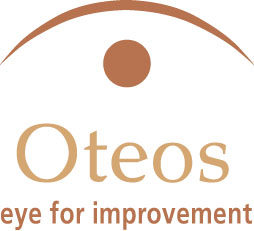Why the right person for the job matters…
In every position, regardless of what product is involved, having the right person in the right position is essential to the success of the company. In a successful work environment, work processes are carefully designed to ensure an efficient and smooth flow to minimize waste and increase productivity. Even the best processes won’t work if the right people are not in the right position within the company.
One night a group of us went for supper at a popular chain restaurant and experienced what happens when staff isn’t a good fit for their role in the organization. My daughter was competing in a dance competition in this small town of 5,000 people. The three-day annual event brings in several hundred people to the community, occupying hotel rooms, and supporting local businesses. This is an opportunity to boost sales and build a business’s reputation. It also gives management the chance to demonstrate their leadership skills and to develop their staff.

When we arrived, the restaurant was busy, but our party of seven was seated quickly. We noted a large party occupying several tables, and the rest was filled with dancers proudly displaying their studio clothes. Our very pregnant waitress took our drink order swiftly, and we waited. And we waited some more. Finally, she returned with our drinks but wasn’t ready to take our order. Several minutes later, she returned to take our order. During the wait, I observed what was happening in the rest of the restaurant. It was evident that they were horribly understaffed. That occasionally can happen at any restaurant, but the manager needs to control the situation and manage the expectations of the guests.
After finishing our meal, I tried to signal the waitress that we wanted the bill. Twenty-five minutes passed, so I went to the hostess desk and waited. Another ten minutes passed when another waitress came by. I asked if I could speak to the manager. I expressed my concerns about the service we received that evening and the effect that type of shift has on staff and customers alike. The reaction of the manager was shocking. She accepted no responsibility for our experience or for the stress her staff was under, nor did she apologize. I wasn’t looking for a discount; I wanted to see what type of leader she was.
Unfortunately, this scenario is commonplace in many businesses. Whether it is out of desperation, obligation, or union rules, it is not uncommon that the wrong person is in the wrong job or position. Having the right employee in the correct position starts at the interview. But past that, the employer needs to ensure that staff remains in the right position throughout their time with the company. Not only does it support personal and professional development, but it reinforces the organization’s commitment to their staff. This will not go unnoticed by employees. Through on-going staff development, evaluations of staff and employee satisfaction ratings and knowing the staff and their capabilities, the employer can manage the leadership within their organization.
For the staff level readers, I ask you to consider the last time you felt your employer took an interest in you, either personally or in your job. I also challenge you to examine your own position and job performance. Are you the right person for the job? If you are in a management or owner position, how well do you know your staff? Do you encourage your staff to develop themselves?



 Research shows that communication is a vital component for a high-functioning organization that wishes to empower employees and thrive as a business, regardless of the industry. Unfortunately, there seems to be a misconception by many in management roles that employees that don’t speak their mind and who go along with the management’s direction are more valued than those that express themselves. While these silenced employees may be perceived as easier to manage, the opposite is actually true. Employers must provide a platform for employees to have a voice. This not only keeps employees engaged but increases performance. It promotes creativity and stifles groupthink leading to greater innovation.
Research shows that communication is a vital component for a high-functioning organization that wishes to empower employees and thrive as a business, regardless of the industry. Unfortunately, there seems to be a misconception by many in management roles that employees that don’t speak their mind and who go along with the management’s direction are more valued than those that express themselves. While these silenced employees may be perceived as easier to manage, the opposite is actually true. Employers must provide a platform for employees to have a voice. This not only keeps employees engaged but increases performance. It promotes creativity and stifles groupthink leading to greater innovation.